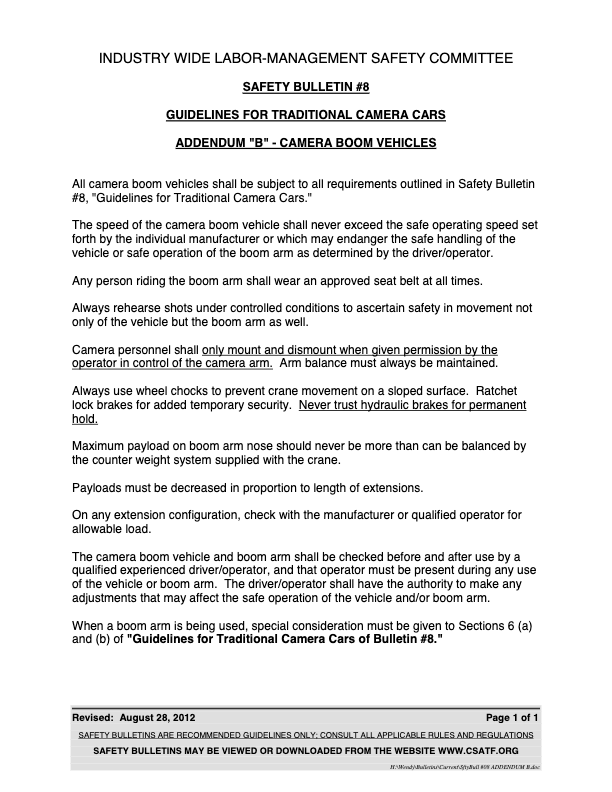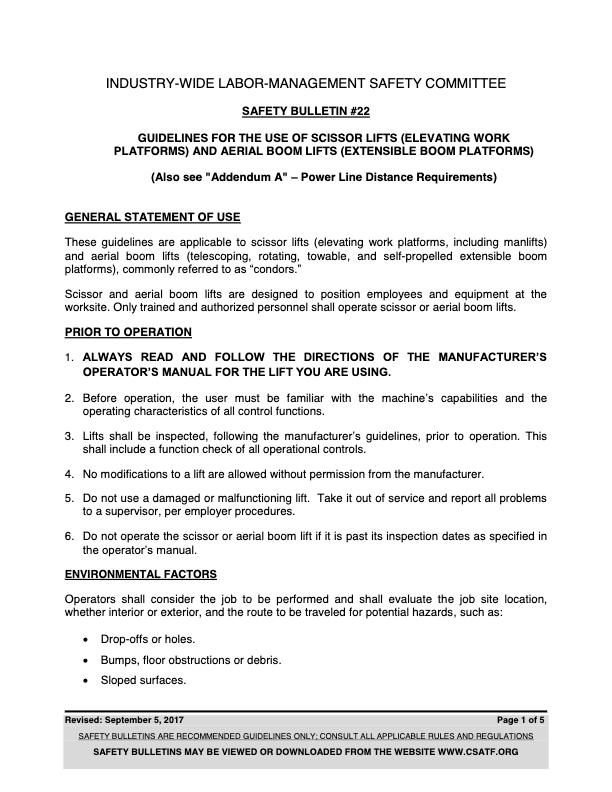Skip to content
General safeguards
- Use appropriate fall protection equipment whenever you are working greater than 30 inches (general use) or 6 feet (during construction) above the floor, ground, or other working area, when standard guardrails or other equivalent protection are not available.
- Unprotected work areas such as platforms, sets, walkways, cliffs, floor openings, shafts and rooftops (when approaching within 6 feet of the roof’s edge) require the use of approved fall protection measures. These measures include but are not limited to guardrails, barriers, safety net systems, a written Fall Protection Plan, and/or the use of personal fall arrest, fall restraint, or work positioning systems.
- Fall arrest equipment is always required when working in the permanent grid and truss system (perms) outside the catwalks and handrails.
- Do not use fall protection equipment without proper training and instruction. Only use appropriate anchorage points.
- Temporary stair railings and guardrails are required around elevated surfaces, pits, holes or other unprotected openings.
- Ensure proper lighting in such areas and post signs as necessary.
Scaffolds
- Only use scaffolds with the appropriate guardrails, mid rails and toe boards.
- Do not remove guardrails; contact a qualified person if they need to be removed to perform special work. Report any missing guardrails at once.
- Do not climb across braces.
Ladders
- Inspect all ladders before each use for broken or missing rungs, steps, split side rails or other defects.
- Never place ladders in doorways unless protected by barricades or guards.
- Never stand on the top two rungs of a ladder.
- Use only approved ladders or steps. Check the labels for compliance.
- Always use both hands while climbing.



